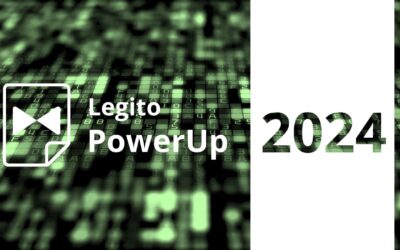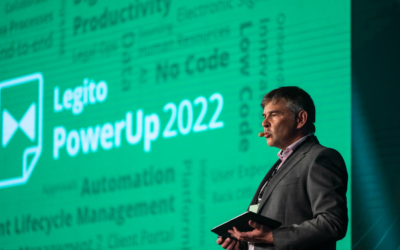There’s no convincing some people
When you build a solution to a business problem, it would be nice to borrow the scientific method to persuade a sceptical world to consider your solution objectively. Sell solutions on their merits rather than brand, market status, adoption cycles and monopolistic positions. However, experience has trained buyers to be sceptical, so vendors have adopted emotional devices to overcome emotional responses.
I’ve seen many customer demos in my work for various software companies. The most compelling demo is a real customer use-case subjected to a current production version of software and producing real-time results that speak for themselves. In document automation, get hold of an actual customer document and automate it. Automating the document merely for a demo shows it’s not that hard to automate. Getting a tailored document in seconds after a few minutes answering questions prompted by the template shows it quicker and more reliable than manually amending documents from a static Word file. Automating a document with tables and fussy formatting shows you can use the tool for real-life documents. Equipped with data from just one document, it’s often possible to build a positive business case with in-year return on investment. And yet, how many customers buy the solution?
Still, vendors need to demonstrate their ability to support software, make it secure, and operate sound data protection measures. Organisations cannot buy software on a whim. The strange thing is that most no-go decisions happen much earlier in the process, before vendor due diligence.
I find that it’s not enough to show that software ‘works’ and that it will facilitate real improvements at a price that gives a quick return on investment. There must be a spark to move a project from the someday/maybe list, to make it a project that someone will execute right now, among all the other possible business improvements they could doubtless make. The spark could be a person who has the personal conviction and status to usher a project through the process, and sales teams certainly like to identify those people when they exist. Otherwise, I believe the challenge for vendors is to produce a solution that doesn’t merely improve the status quo. Projects that get done are projects that enable an outcome that wasn’t possible without a solution, even inefficiently or inelegantly.
In document automation and contract management, we need to build solutions that create outcomes when the alternative is so contrary to human nature that the outcome will not be delivered by relying on human endeavours alone. This happens at the intersection where a task requires expertise (like a lawyer drafting a contract or a clinician documenting a clinical trial) and volume. Expertise is a scarce commodity. If you throw volume at experts, you get mistakes and fed-up experts.
A compelling solution augments expertise when a business requirement needs to deploy expertise at scale, in preference to finding more experts (or more experts with a high tolerance for boredom – did you ever see one of those?) Expertise at scale is a lower threshold than manufacturing widgets at scale – experts are not machines, and their aptitude for volume is low. Alas, managers of experts (unless they come from the ranks of experts and remember what it’s like) tend to overestimate human capacity for repeated tasks.
In aviation, pilots must deploy expertise for long periods without making mistakes. At least, that’s how it looks. Thanks to formalised study of a topic called ‘Human Performance’ (a mandatory exam), we train pilots to acknowledge they are error-prone. Cockpit automation augments the pilot’s expertise to free up the pilot to maintain situation awareness and retain capacity to do tasks that cannot be automated, like handling contingencies. It’s not an exaggeration to say that using automation to augment expertise has enabled safe outcomes in aviation that would not have been possible without automation. As an aside, it’s also worth noting that the automation is designed to be intuitive for pilots. Pilots don’t need a ‘developer’ to come onboard and program the flight management system before handing over the aircraft to the pilot before take-off. If there’s a need to change course mid-flight (air space congestion, more fuel-efficient flight levels), pilots can adjust the automation parameters – no intermediary needed.
Solutions like Legito are very capable of doing useful work with economic advantage for organisations with a will to do it – sign up for a free trial, and harness the benefits of your agility. However, the growth of automation solutions will be driven less by the insight and enthusiasm of early adopters, and more by the necessity to deliver otherwise unachievable outcomes. Our responsibility is to make sure the solutions are intuitive and empowering directly for the people with subject-matter expertise. Hence the no-code philosophy. We must also continue to build a solution that encompasses the whole process, not just bits of it. To borrow once again from aviation, we are building the equivalent of a flight management system – not a point solution for just one part of the flight. The solution must be dependable to free up human capacity to do what humans are good at.
There’s no convincing some people
When you build a solution to a business problem, it would be nice to borrow the scientific method to persuade a sceptical world to consider your solution objectively. Sell solutions on their merits rather than brand, market status, adoption cycles and monopolistic positions. However, experience has trained buyers to be sceptical, so vendors have adopted emotional devices to overcome emotional responses.
I’ve seen many customer demos in my work for various software companies. The most compelling demo is a real customer use-case subjected to a current production version of software and producing real-time results that speak for themselves. In document automation, get hold of an actual customer document and automate it. Automating the document merely for a demo shows it’s not that hard to automate. Getting a tailored document in seconds after a few minutes answering questions prompted by the template shows it quicker and more reliable than manually amending documents from a static Word file. Automating a document with tables and fussy formatting shows you can use the tool for real-life documents. Equipped with data from just one document, it’s often possible to build a positive business case with in-year return on investment. And yet, how many customers buy the solution?
Still, vendors need to demonstrate their ability to support software, make it secure, and operate sound data protection measures. Organisations cannot buy software on a whim. The strange thing is that most no-go decisions happen much earlier in the process, before vendor due diligence.
I find that it’s not enough to show that software ‘works’ and that it will facilitate real improvements at a price that gives a quick return on investment. There must be a spark to move a project from the someday/maybe list, to make it a project that someone will execute right now, among all the other possible business improvements they could doubtless make. The spark could be a person who has the personal conviction and status to usher a project through the process, and sales teams certainly like to identify those people when they exist. Otherwise, I believe the challenge for vendors is to produce a solution that doesn’t merely improve the status quo. Projects that get done are projects that enable an outcome that wasn’t possible without a solution, even inefficiently or inelegantly.
In document automation and contract management, we need to build solutions that create outcomes when the alternative is so contrary to human nature that the outcome will not be delivered by relying on human endeavours alone. This happens at the intersection where a task requires expertise (like a lawyer drafting a contract or a clinician documenting a clinical trial) and volume. Expertise is a scarce commodity. If you throw volume at experts, you get mistakes and fed-up experts.
A compelling solution augments expertise when a business requirement needs to deploy expertise at scale, in preference to finding more experts (or more experts with a high tolerance for boredom – did you ever see one of those?) Expertise at scale is a lower threshold than manufacturing widgets at scale – experts are not machines, and their aptitude for volume is low. Alas, managers of experts (unless they come from the ranks of experts and remember what it’s like) tend to overestimate human capacity for repeated tasks.
In aviation, pilots must deploy expertise for long periods without making mistakes. At least, that’s how it looks. Thanks to formalised study of a topic called ‘Human Performance’ (a mandatory exam), we train pilots to acknowledge they are error-prone. Cockpit automation augments the pilot’s expertise to free up the pilot to maintain situation awareness and retain capacity to do tasks that cannot be automated, like handling contingencies. It’s not an exaggeration to say that using automation to augment expertise has enabled safe outcomes in aviation that would not have been possible without automation. As an aside, it’s also worth noting that the automation is designed to be intuitive for pilots. Pilots don’t need a ‘developer’ to come onboard and program the flight management system before handing over the aircraft to the pilot before take-off. If there’s a need to change course mid-flight (air space congestion, more fuel-efficient flight levels), pilots can adjust the automation parameters – no intermediary needed.
Solutions like Legito are very capable of doing useful work with economic advantage for organisations with a will to do it – sign up for a free trial, and harness the benefits of your agility. However, the growth of automation solutions will be driven less by the insight and enthusiasm of early adopters, and more by the necessity to deliver otherwise unachievable outcomes. Our responsibility is to make sure the solutions are intuitive and empowering directly for the people with subject-matter expertise. Hence the no-code philosophy. We must also continue to build a solution that encompasses the whole process, not just bits of it. To borrow once again from aviation, we are building the equivalent of a flight management system – not a point solution for just one part of the flight. The solution must be dependable to free up human capacity to do what humans are good at.
More Industry Insights



















